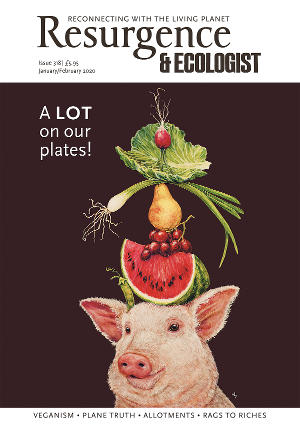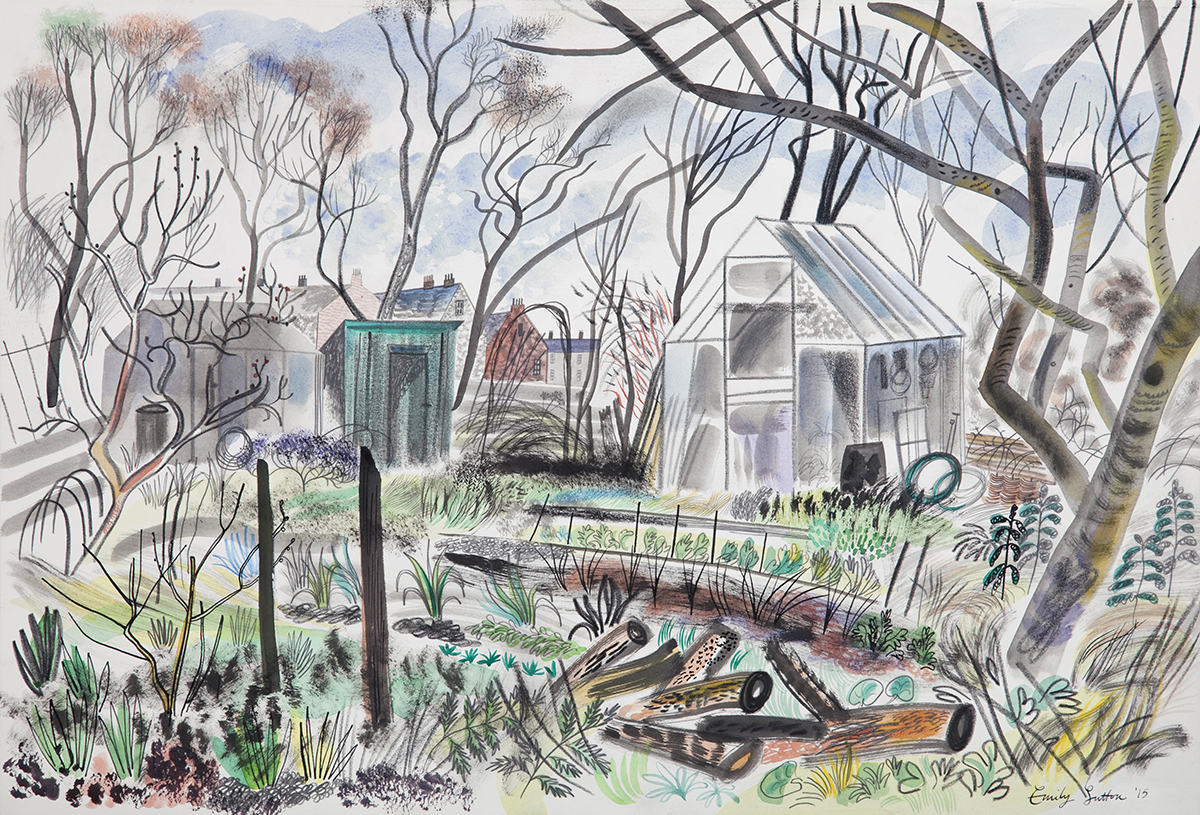Is it impossible to grow food and support Nature at the same time? If we pursue intensive, industrial farming, we will ultimately wipe ourselves out, for our very survival depends upon a healthy environment. Some organic farms look pretty much like conventional farms: they are still trying to grow large monocultures of crops. Even on an organic farm, a large field of wheat does not have high biodiversity, so there are few natural enemies to control outbreaks of pests and diseases. I think there are better ways to grow food, and farming could learn something from allotments. Let me tell you a little more about them.
First, a recent study from Bristol University, based on data collected from around the UK, found that allotments had the highest insect diversity of any urban habitat – higher than gardens or city parks, and higher even than city Nature reserves. Secondly, data we have been collecting at Sussex University on productivity of allotments suggests that they can produce a lot of food. Competent allotmenteers can produce the equivalent of about 35 tonnes of food per hectare. This compares very favourably to wheat and oilseed rape, the main arable farmland crops in the UK, which produce about 8 tonnes and 3.5 tonnes per hectare respectively. Bear in mind also that allotment produce generates zero food miles, zero packaging, and healthy fruit and vegetables often grown with minimal or no pesticides. Thirdly, allotment soils tend to be healthier than farmland soils, with more worms and higher carbon content, helping to tackle climate change. Fourthly, a study in the Netherlands found that allotmenteers tend to be healthier than neighbours without allotments, particularly in old age. To summarise, allotments seem able to produce lots of food, support high biodiversity, have healthy soil, and make people healthy. A win–win–win–win.
It is sad, then, that an estimated 90,000 people are on waiting lists for allotments in the UK. Given the benefits, wouldn’t the government be wise to free up more land to accommodate these people? A tiny fraction of the £3.5 billion currently given out in farm subsidies could be diverted to purchase land for allotments. Some could also be spent on encouraging even more people to grow their own food, perhaps via a programme of public education about the benefits, with provision of training, support and free vegetable seeds. In the UK we currently consume about 6.9 million tonnes of fruit and vegetables per year, of which 77% is imported at a cost of £9.2 billion – shocking statistics when we consider that our climate and soils are well suited to growing many of these crops. Under allotment-style management, all of our current fruit and vegetable consumption could be grown in the UK on just 200,000ha of land (the equivalent of 40% of the current area of gardens, and just 2% of the current area of farmland).
What is it about allotments that enables them to produce abundant food while supporting a healthy environment? There are a number of factors. Small patches of crops are much less susceptible to pests, which find it harder to locate their preferred food amidst all the other crops. Their natural predators, such as ladybirds, lacewings and hoverflies, are generally much more abundant, so even if pests do find a crop they tend not to flourish. As a result, it is easy to grow plentiful fruit and vegetables without using pesticides. Pollinator populations are high, benefiting from the diversity of habitats, so crop yields are not limited by a shortage. By growing dozens of different crops in close proximity, the allotmenteer gets multiple harvests per year, rather than just one. Different crops can be grown between each other, making maximum use of the space. The allotment is never stripped bare (as happens when an arable crop is harvested), so the soil does not erode and organic matter can build up over time. Perennial crops such as fruit bushes also help to hold the soil together.
Farming systems already exist that use these principles. Permaculture, agroforestry and biodynamic farming are all variants on this theme. The only real downside to this type of food production is that it is much more labour-intensive. Industrial farming is heavily mechanised and requires very few people – a major driver of the demise of rural communities. To scale up allotmenting or permaculture would require getting many more people back onto the land, but would that be such a bad thing? It is predicted that many traditional occupations will disappear in the next few years as AI makes humans redundant. One of the ways we could find gainful employment for many of these people would be by expanding small-scale agriculture.
Imagine if the money currently being paid out in subsidies, with the most going to the biggest landowners, were instead given to small-scale, sustainable farming systems, so that they became financially viable. Government-funded experimental farms should be researching how to optimise this type of agriculture. If a gardener or an allotmenteer can get 35 tonnes of food from a hectare of land without the benefit of any training or R&D, imagine what might be possible if we took a scientific approach to properly evaluating the best practices. Researchers could investigate which combinations of crops grow best together, develop varieties best suited to this form of farming, test how to boost populations of useful insects such as ladybirds and earwigs, and work out how best to ensure that the organic content of soils grew slowly over time. With this approach to growing food, we could have a truly sustainable farming system in which wildlife thrived and people had access to plentiful, locally produced, nutritious food. It is not too late to save our planet, but to do so we need to learn to live alongside Nature. If you really want to leave your grandchildren a healthy planet to live on, it’s time to get out into the garden or onto the allotment and start growing food.







